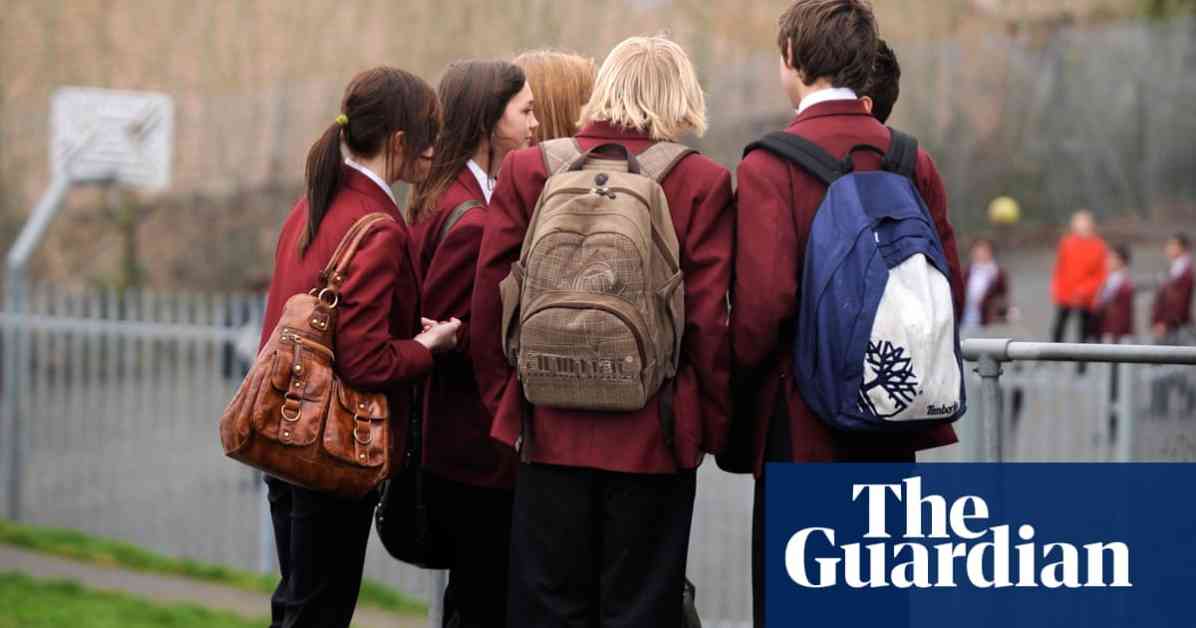Reducing School Uniform Costs in Scotland: New Guidelines Issued
In an effort to reduce the financial burden on families and promote inclusivity and sustainability, the Scottish government has issued new guidelines regarding school uniforms. These guidelines urge schools to limit clothing costs by avoiding branded items and opting for generic items and colors that can be purchased from various suppliers. Additionally, schools are encouraged to offer gender-neutral options as part of their uniform and promote the use of secondhand clothing. The goal is to ensure that a pupil’s uniform and kit do not exceed the amount available to parents through a school clothing grant.
Impact of School Uniforms on Academic Performance
While school uniform has long been a topic of debate, research has shown that wearing uniform has little impact on pupils’ academic performance. The Education Endowment Foundation conducted a study that found little robust evidence to support the notion that introducing a school uniform improves academic performance, behavior, or attendance. Despite this, many schools continue to enforce strict uniform policies that can be costly for families.
The Importance of Inclusivity and Sustainability
One of the key aspects of the new guidelines is the focus on inclusivity and sustainability. By promoting gender-neutral options and encouraging the use of secondhand clothing, schools can create a more welcoming and environmentally-friendly environment. Sandra Douglas, who founded the East Renfrewshire Back to School Bank, emphasizes the importance of school uniform as a leveller, but highlights the challenges that arise when branded items and mandatory gym kits are required. By moving towards more generic and flexible uniform policies, schools can ensure that all students feel comfortable and included.
Response from the Educational Institute of Scotland
Scotland’s largest teaching union, the Educational Institute of Scotland, has welcomed the new guidelines, noting that they will help reduce the financial strain on families. However, the union also expressed disappointment that the guidelines were not issued before the start of the school year. By working together with teachers, parents, and pupils, the government aims to create a more cost-effective and sustainable approach to school uniforms.
The Role of School Clothing Grants
To assist families with the cost of school uniforms, the government provides school clothing grants to parents. These grants offer £120 for primary school pupils and £150 for secondary school pupils, ensuring that the cost of a pupil’s uniform and kit does not exceed this amount. By aligning school uniform costs with the available grant funds, the government hopes to alleviate financial stress for families.
Promoting Flexibility and Inclusivity in School Uniform Policies
The guidance issued by the Scottish government encourages schools to develop flexible and inclusive policies that promote generic items of clothing and do not include compulsory branded items. This approach supports the government’s efforts to reduce clothing costs for families and promote sustainability. By allowing for a range of suppliers and avoiding single suppliers, schools can offer more affordable options for families.
Challenges Faced by Families
Despite the efforts to reduce school uniform costs, many families still struggle to afford the required clothing and kit. Sandra Douglas shared stories of children who refuse to attend school or feel unhappy because they do not have the right uniform. This highlights the importance of ensuring that school uniform policies are inclusive and affordable for all families, regardless of their financial situation.
Comparison to England’s Guidelines
In England, the Department for Education advises schools to keep branded items to a minimum and avoid single suppliers. The government has also implemented a policy limiting schools to a maximum of three branded items of uniform and PE kit. While these guidelines aim to reduce costs for families, the Scottish government’s approach emphasizes inclusivity and sustainability, in addition to affordability.
Moving Towards a More Inclusive and Sustainable Future
By implementing the new guidelines, the Scottish government is taking steps towards a more inclusive and sustainable approach to school uniforms. By promoting gender-neutral options, secondhand clothing, and affordable generic items, schools can create a welcoming environment for all students. While there may be challenges in transitioning to these new policies, the long-term benefits of reducing clothing costs and promoting sustainability are worth the effort.
In Conclusion
The issuance of new guidelines regarding school uniforms in Scotland is a positive step towards reducing costs for families and promoting inclusivity and sustainability. By encouraging schools to limit clothing costs, offer gender-neutral options, and promote secondhand clothing, the government is working towards a more affordable and environmentally-friendly approach to school uniforms. With the support of teachers, parents, and pupils, Scotland can create a more inclusive and sustainable education system for all students.

